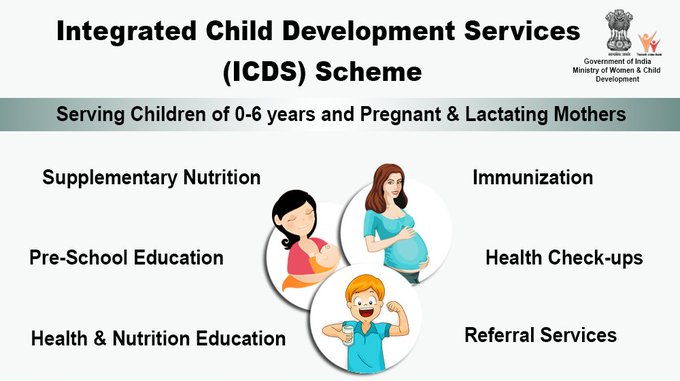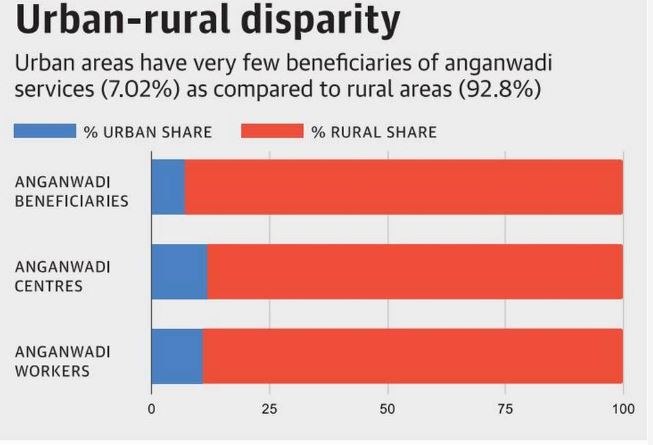Governance
Lack of Anganwadis in Urban Areas
- 05 Feb 2020
- 3 min read
Why in News
Recently, the government’s response to a Right to Information (RTI) query has revealed that for every 100 anganwadi beneficiaries in the country, only 7 are in urban areas.
- The minuscule presence of beneficiaries is due to lack of Anganwadi centres in urban areas.
- This shows poor coverage by the Integrated Child Development Scheme (ICDS) in urban areas.
Anganwadi Centres
- Anganwadis or day-care centres are set up under the centrally sponsored Integrated Child Development Services (ICDS) scheme.

- The scheme is being implemented by the Ministry of Women and Child Development.
- Anganwadi centres provide a package of six services: supplementary nutrition, pre-school non-formal education, immunisation, nutrition and health education, as well as referral services.
- Aim: To reduce infant mortality and child malnutrition.
- Beneficiaries: Children in the age group of zero to six years, and pregnant women and lactating mothers.
Current Scenario
- Number of beneficiaries
- Out of 7.95 crore beneficiaries of the Anganwadi scheme in the country as on September 30, 2019, only 55 lakh were registered at urban anganwadis.
- Less number of anganwadi centres in urban areas
- There are 13.79 lakh anganwadis operational across the country, out of which 9.31 lakh centres are linked to the government’s web-enabled data entry system called Rapid Reporting System.
- Of that linked anganwadis, 1.09 lakh centres are in urban areas and the remaining 8.22 lakh are in rural areas of the country.
- Scope for coverage by the scheme
- National Nutrition Survey 2016-18 found that 35% of children under five were stunted and 17% were wasted.
- It also found that 22% of children in the age group of 5-9 years were stunted and 23% were thin for their age.
- Urban areas specific: Children in urban areas showed two to three times higher prevalence of obesity as compared to their peers in rural areas.
- National Nutrition Survey 2016-18 found that 35% of children under five were stunted and 17% were wasted.
- Latest Step Taken
- The NITI Aayog has been working on a draft paper to strengthen the ICDS programme in urban areas, keeping in mind challenges such as migration, population density and the long commute involved for workers and beneficiaries.




